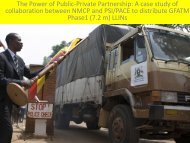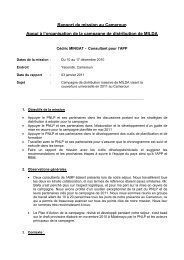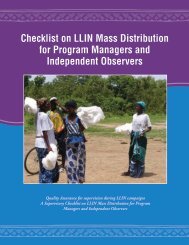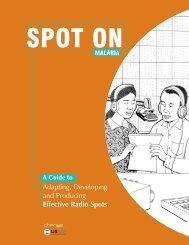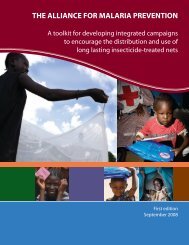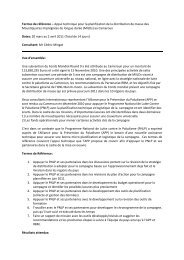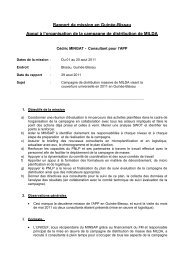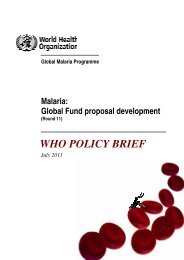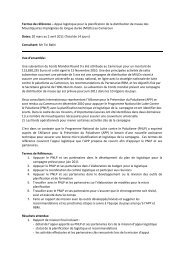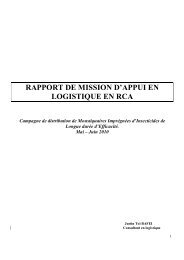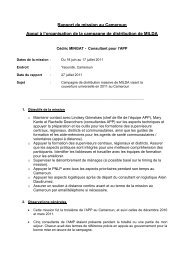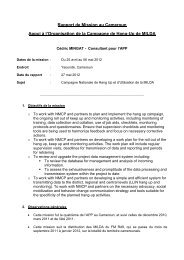Anambra State Post-Campaign Net Tracking Survey
Anambra State Post-Campaign Net Tracking Survey
Anambra State Post-Campaign Net Tracking Survey
You also want an ePaper? Increase the reach of your titles
YUMPU automatically turns print PDFs into web optimized ePapers that Google loves.
Introduction<br />
<strong>Anambra</strong> LLIN campaign evaluation<br />
Nigeria is currently engaging in a massive effort to scale up malaria prevention using mass<br />
distributions of long-lasting insecticidal nets (LLIN) in order to reach the 2010 RBM targets.<br />
While previous LLIN distributions have focused on biologically vulnerable groups, namely<br />
children under 5 and pregnant women, current efforts as outlined in the Nigeria National<br />
Malaria Control Strategic Plan 2009-2013 [1] are aimed at reaching universal access to LLIN for<br />
the general population with a specific target of 80% of households owning at least two ITN.<br />
In close collaboration with <strong>State</strong>s, development partners and stakeholders the National Malaria<br />
Control Program in 2009 developed a roll-out plan to cover all 36 <strong>State</strong>s and the Federal Capital<br />
Territory with 63 million LLIN by the end of 2010. The principle approach to LLIN distributions is<br />
a state-wide stand-alone campaign providing two nets to every registered household. <strong>Anambra</strong><br />
<strong>State</strong> was one of the first to implement the campaign in August 2009 with the support of the<br />
DFID, the SuNMaP project and World Bank.<br />
The purpose of this survey was to evaluate the outcome of the campaign in <strong>Anambra</strong> <strong>State</strong> with<br />
respect to the achieved universal coverage with LLIN. It is part of a comprehensive evaluation<br />
which also looks at operational and cost issues and will compare results to those of an<br />
integrated campaign with the immunization provided through Child Health Days in the Northern<br />
<strong>State</strong> Sokoto as well as other stand-alone LLIN campaigns in other states (e.g. Kano, Niger and<br />
Ogun).<br />
The specific survey objectives were:<br />
Primary objectives<br />
1. To capture the outcome of the universal ITN/LLIN access campaign in Niger <strong>State</strong><br />
2. To assess the level of net retention six month after the distribution<br />
3. To assess the level of net use and reasons for non-compliance<br />
Secondary objectives<br />
• Measure the equity in access to campaign nets<br />
• Obtain detailed information about net use and sleeping patterns in the family during the<br />
dry season<br />
• Evaluate the success of the IEC and BCC activities associated with the campaign<br />
Expected Benefits and Value<br />
The results of the proposed study are expected to<br />
• Provide the <strong>State</strong> and National Ministry of Health, Malaria Control Program and RBM<br />
partners with valuable information on the success of current guidelines for mass<br />
campaign distribution, whether they reached the intended targets for universal<br />
coverage or – if not – what should be changed.<br />
• In addition, the study will give insight into behavioural aspects around ITN, namely<br />
retention and use that will inform the IEC/BCC component of future campaigns.<br />
11


